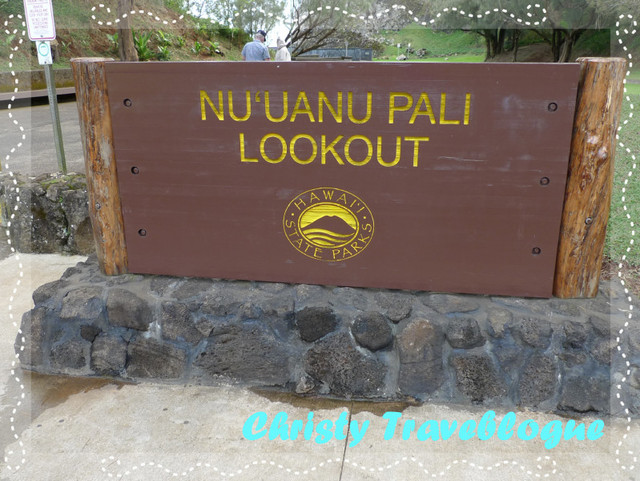
Dividing the windward coast of Oahu from Honolulu is the Nu'uanu Pali windward cliff; also known as pali in the Hawaiian native language. The cliff stretches outward to form a sharp drop from the Ko'olau Mountain which is situated at the head of the Nu'uanu Valley.
While the cliffside; with its outstretched platform to offer a breathtaking view of O'ahu's windward side and of Kane'ohe (Kane'ohe Bay) and Kailua.
The lookout point is also part of the Nu'uanu Pali State Park and parking spaces are provided; though with a fee according to the stipulated parking period, and the car park and state park is properly designed to facilitate for those with disabilities.
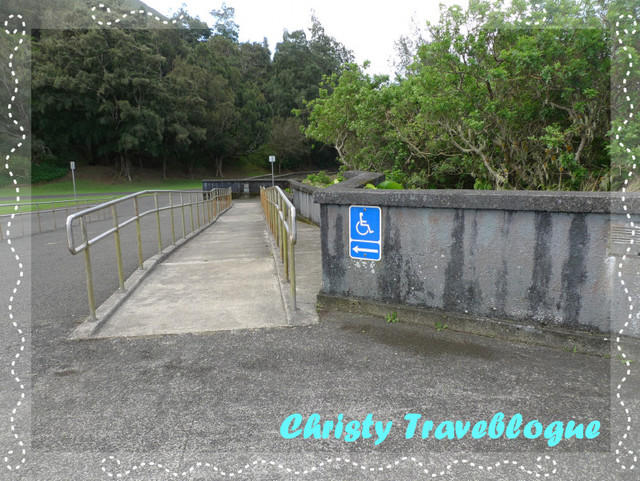
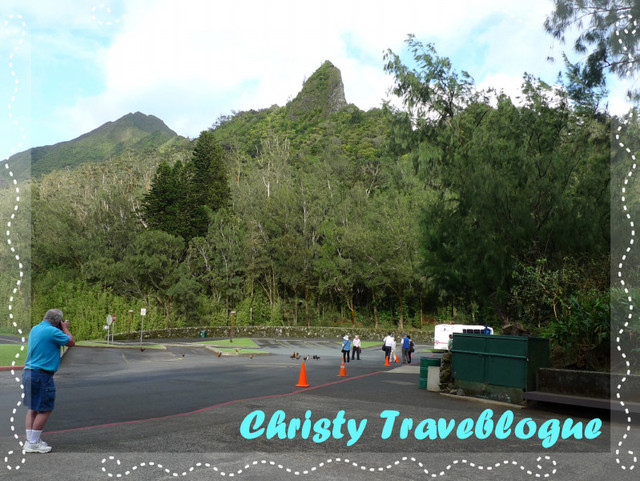
The Pali Highway which connects the windward side; mainly Kane'ohe and Kailua with downtown Honolulu passes through tunnels which were part of the cliffs; forming the Nu'uanu Pali Tunnels.
These tunnels were said to be the channels for the strong trade winds which passes through them; inadvertently forming a sort of a wind tunnel. As such, the top of the cliffside where the lookout point is situated can be rather windy and the temperatures can be a few degrees lower; making it really cool or cold especially during the winter season.
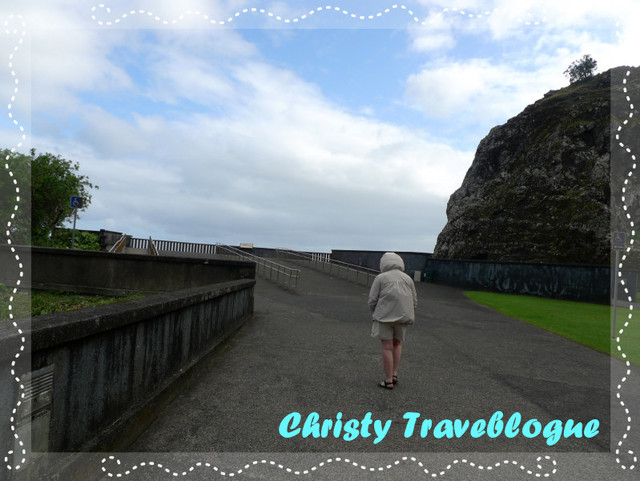
The panoramic view on the cliffside can easily make one lost in the moment; as one overlooks the natural landscapes which surround the valley.
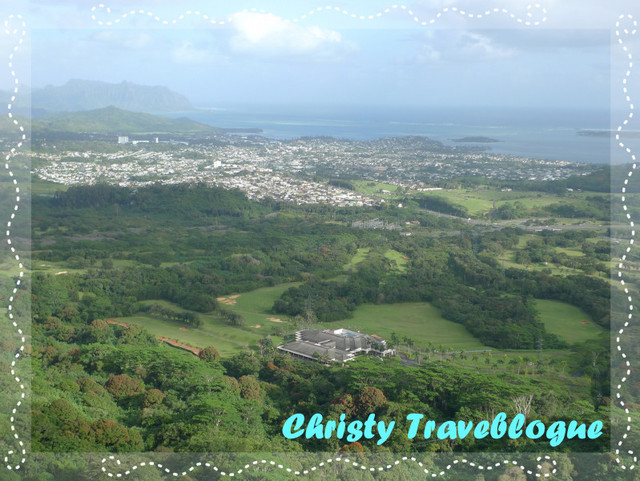
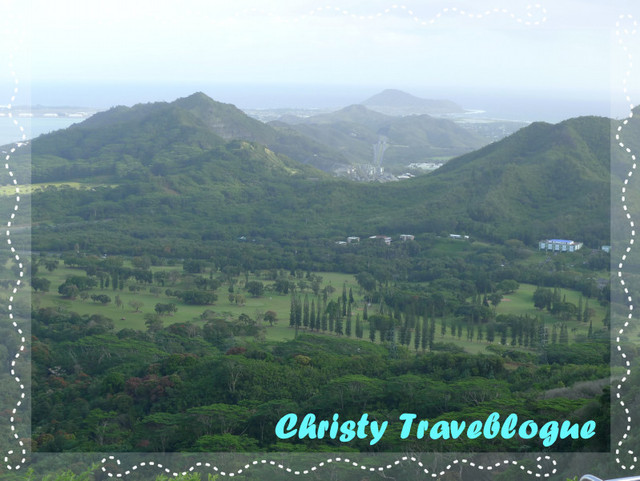
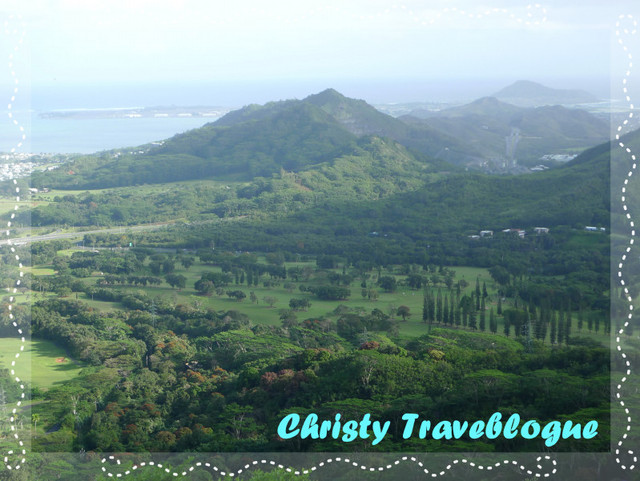
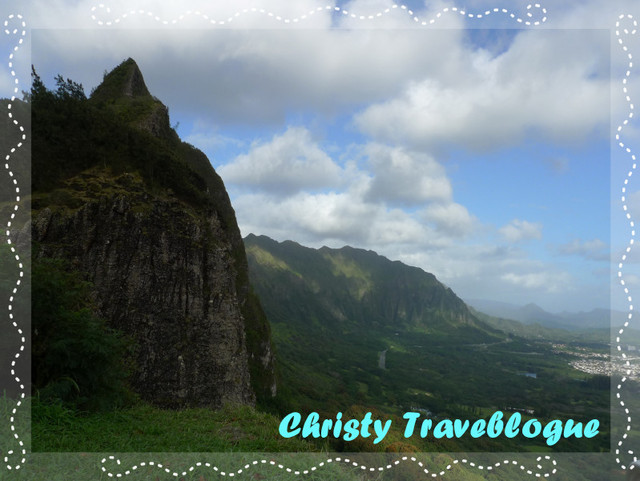
Though peaceful through the eyes of the beholder, the Nu'uanu Pali Lookout Point is part of history; and one that holds a bloody past in the history of Hawaii itself for the famous Battle of Nu'uanu took place on this very site.
The battle took place in the late 1700s; in 1795m when King Kamehameha I sailed to the island of O'ahu after conquering the islands of Maui and Moloka'i; along with his army which counts to ten thousands of warriors; some of which who are of non-Hawaiian origin. His aim was to unite all the Hawaiian islands under one rule; an effort which he was recognized for until this very day and recorded in history.
As the people of O'ahu fights back to defend their beloved island led by Kalanikupule, the battle took place in the Nu'uanu Pali area where the local O'ahu folks were outnumbered and pushed towards the edge of the valley; where many of them fell to their deaths below the sharp cliffs. It was not the King's number of warriors in the army alone which earned them their victory; but King Kamehameha I's cannons surpassed the spears and firearms used by the locals.
The Nu'uanu Battle was also known as Kaleleka'anae; which is translated from the Hawaiian language into 'leaping of the anae fish' which describes the incident of the local O'ahu natives jumping off their cliffs to their deaths in the battle. The deaths were said to exceed that of hundreds; and though the estimated number was initially 400, there was a discovery of number of skulls double that number (~800) when the first road which was built in 1845 to connect Windward O'ahu with Honolulu was later developed into a highway in the year 1898; where today it is further made to be Pali Highway.
King Kamehameha I's victory was further cemented into history when the king signed an agreement with Chief Kaumuali'i of Kaua'i where he became the first king of all the Hawaiian islands; an objective he aimed for long.
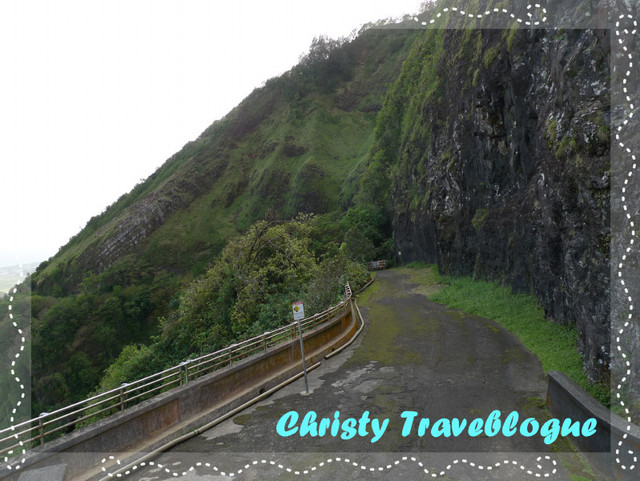
The edge of the valley which overlooks the sharp cliff; could this be the one which the warriors fell off?
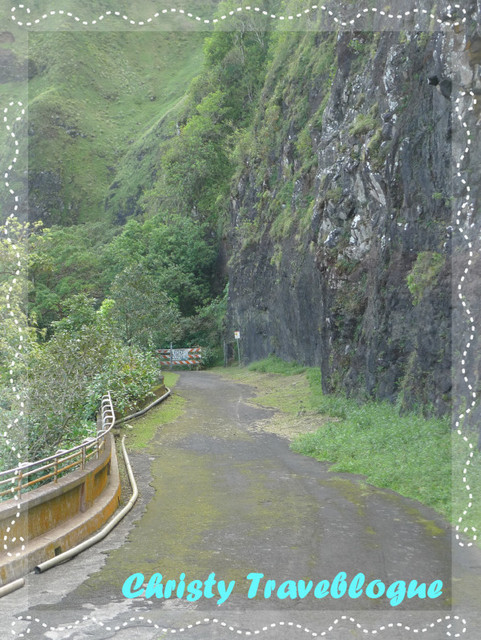
It is now closed and visitors are not advised to go near the closed section.
There are also myths and superstitions surrounding this breezy lookout point; as with most ancient and historical sites in Hawaii.
One of the superstitions lie in the back of the mountain, or the Nu'uanu Valley; where two large stones stand. Apparently, the two stones represent two goddesses; Hapu'u and Ka-lae-hau-ola; said to be guardians of the passageway through the cliffs; or pali.
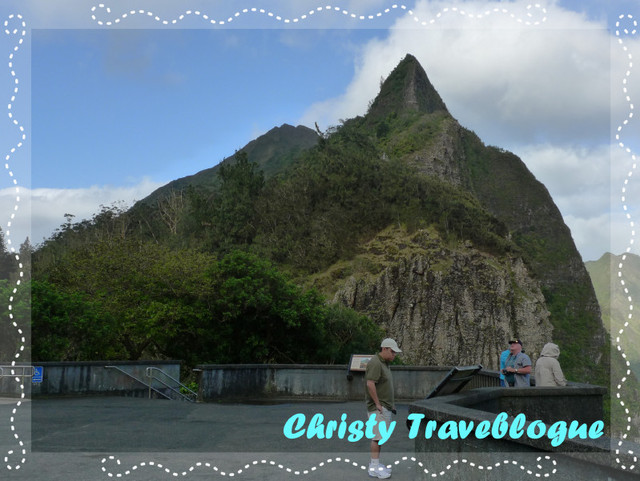
Another legend is that a mo'o wahine or lizard woman in Hawaiian language dwells there; and she may attract male visitors to their deaths down the cliffs.
I am not sure whether this is any connection to the little lizard island known as Mokoli'i which can be seen from the lookout point; although a different legend surrounds the island itself but there is a mere mention of lizard; from its name.

Spot the little island at the end of the center which is said to the little lizard or Mokoli'i island which, is also known as the Chinaman's Hat island.
According to the local legend, the island is part of the tail of the dragon Mokoli'i which was thrown by the goddess Hi'iaka (sister of Pele) when she slayed the dragon. The other parts of the dragon were said to be thrown around the areas; which were part of the rock forming the Kualoa Ridge near the Nu'uanu Valley area.
It is interesting that the lookout point holds such an array of stories behind its origin and also the superstitions surrounding it.
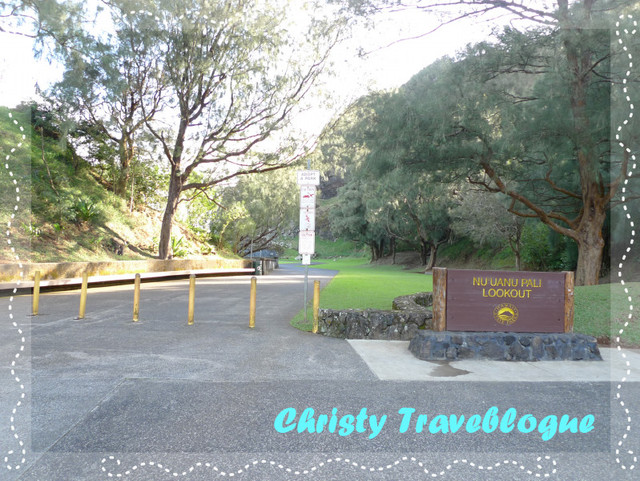
A place which one must not miss when on the O'ahu island; although it would be pretty hard when one passes through the highway to get to downtown Honolulu.

No comments:
Post a Comment